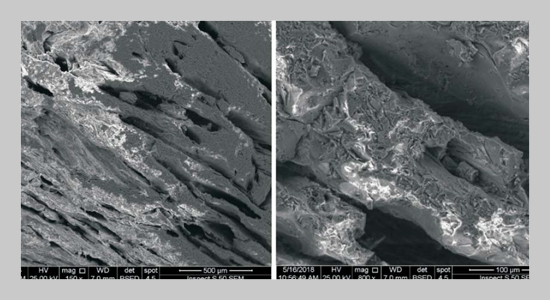REFERENCES
- [1] World Health Organization (WHO) (1971) International Standards for Drinking-Water, 3rd Edition. Geneva, Switzerland, p.: 9.
- [2] Whipple, G.C., (1907) The Value of Pure Water. John Wiley and Sons. New York. P.: 58.
- [3] Das, C., and Bose, S., (2017) Advanced Ceramic Mmembranes and Applications. Taylor and Francis Group.
- [4] Mwabi, J. K., F. E. Adeyemo, T. O. Mahlangu, B. B. Mamba, B. M. Brouckaert, C. D. Swartz, G. Offringa, L. Mpenyana-Monyatsi, and M. N. B. Momba, (2011) "Household water treatment systems: A solution to the production of safe drinking water by the low-income communities of Southern Africa", Physics and Chemistry of the Earth 36, 1120-1128. Doi : 10.1016/j.pce.2011.07.078
- [5] Kingery W., Bowen H., and Uhlmann D., (1976) Introduction to Ceramics. 2nd ed. New York: Wiley.
- [6] Agbo, S. C., E. U. Ekpunobi, C. C. Onu and K. G. Akpomie (2015) “Development of Ceramic Filter Candle from NSU (Kaolinite Clay) for Household Water Treatment”, International Journal Of Multidisciplinary Sciences And Engineering, 6(10), 18-23.
- [7] Eze, K. A., J. O. Nwadiogbu, and E. T. Nwankere, (2012), “Effect of acid treatment on the physicochemical properties of kaolin clay”, Archives of Applied Science Research, 4(2), 792–794.
- [8] Simonis, J.J., A. K. Basson, (2011), “Evaluation of a low cost ceramic micro-porous filter for elimination of common disease microorganisms”, Physics and Chemistry of the Earth, 36,1129-1134.
- Doi : 10.1016/j.pce.2011.07.064
- [9] Yahaya, S., S. S. Jikan, N. A. Badarulzaman, and A. D. Adamu, (2017), "Chemical Composition and Particle Size Analysis of Kaolin", Path of Science, 3(10), 1001-1004. Doi : 10.22178/pos.27-1
- [10] Fatimah, I., U. A. Hasanah, and H. P. Putra, (2014), "Preparation of bifunctional ceramic membrane based on TiO2/Kaolinite for Water Disinfection", J. Mater. Environ. Sci. 5(6), 1976-1981.
- [11] Tsuru, T. , (2001), " Inorganic Porous Membranes for Liquid Phase Separation", Separation and Purification Methods, 30(2), 191-220. Doi : 10.1081/SPM-100108159
- [12] Metcalf and Eddy, (2003), "Waste water Engineering, Treatment and Reuse. 4th edition. McGraw-Hill , New York. Singapore, p:1219.
- [13] March, H., and F. R. Reinoso, (2006), "Activated Carbon", 1st edition Elsevier Ltd. Great Britain. P: 425-428.
- [14] Talaat, H.A., N. M. ElDefrawy, A. G. Abulnour and H. A. Hani, (2011), "evaluation of heavy metals removal using some Egyptian clays",2nd International Conference on Environmental Science and Technology. P:37-42.
- [15] Karapinar, N., and R. Donat, (2009),"Adsorption behavior of Cu2+ and Cd2+ onto natural bentonite", Desalination, 249, p:123-129. Doi :10.1016/j.desal.2008.12.046
- [16] Yauvz, O., Y. Altunkaynak and F. Guzel, (2003), "Removal of copper, nickel, cobalt and manganese from aqueous solution by kaolinite", Water Research, 37, 948-952. Doi : 10.1016/S0043-1354(02)00409-8
- [17] Bhttacharyya, K., and S. Gupta, (2008), "Adsorption of a few heavy metals on natural and modified kaolinite and montmorillonite: A review", Advance in colloid and interface science, 140, 114-131.
- Doi : 10.1016/j.cis.2007.12.008
- [18] Veli, S. and B. Alyuz, (2007) "Adsorption of cooper and zinc from aqueous solution by using natural clay", Journal of Hazardous materials, 149, 226-233. Doi : 10.1016/j.jhazmat.2007.04.109
- [19] Dastgheib, S. A., T. Karanfil, and W. Cheng, (2004), "Tailoring activated carbons for enhanced removal of natural organic matter from natural waters", Carbon 42 (3), 547–557. Doi : 10.1016/j.carbon.2003.12.062
- [20] Spellman, F. R., and J. Drinan, (1999), " The Drinking Water Handbook". Technomic Publishing Co, Inc. United States of America. pp 151-152.
















